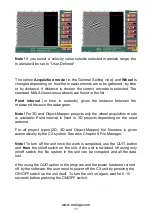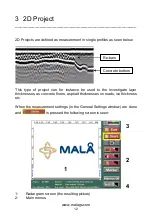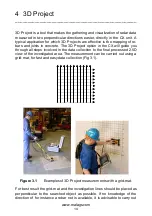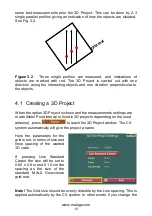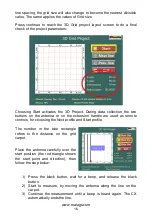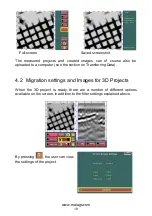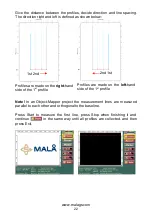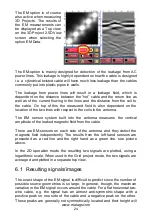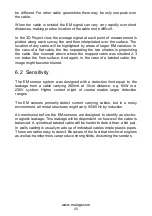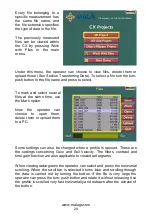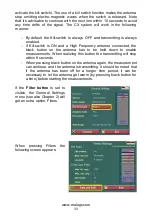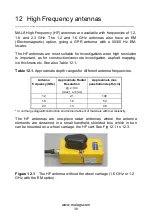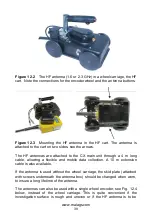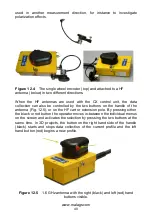
www.malags.com
25
be different. For other cable geometries there may be only one peak over
the cable.
When the cable is twisted the EM signal can vary very rapidly over short
distances, making precise location of the cable more difficult.
In the 3D Project view the average signal at each point of measurement is
plotted along each survey line and then interpolated over the surface. The
location of any cable will be highlighted by areas of larger EM variation. In
the case of a flat cable, the line separating the two shades is pinpointing
the cable. See example above where the mapped cable was situated 2-3
cm below the floor surface. And again, in the case of a twisted cable, the
image might become blurred.
6.2 Sensitivity
The EM sensor system was designed with a detection limit equal to the
leakage from a cable carrying 260mA at 10cm distance, e.g. 60W in a
230V system. Higher current might of course enable larger detection
ranges.
The EM sensors primarily detect current carrying cables, but in a noisy
environment, all metal structures might carry 50/60 Hz by induction.
As mentioned before the EM-sensors are designed to identify an electro-
magnetic leakage. This leakage will be dependent on how well the cable is
balanced. A cylindrical twisted cable will be harder to detect than a flat pair.
In walls cabling is usually made up of individual cables inside plastic pipes.
These are rather easy to detect. Be aware of the fact that electrical engines
as well as transformers can produce strong fields, disturbing the sensors.

